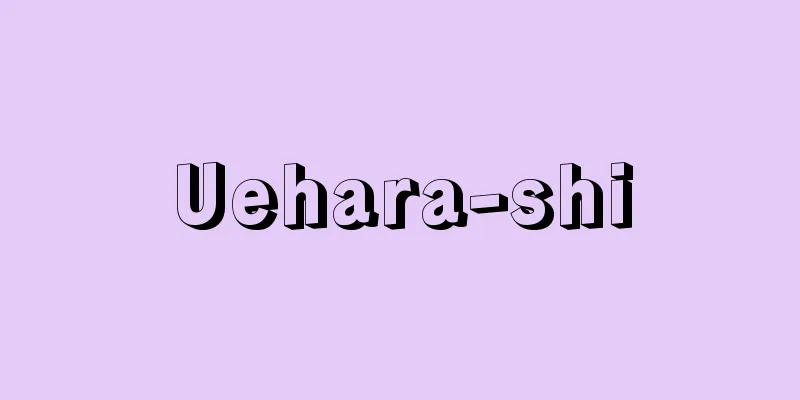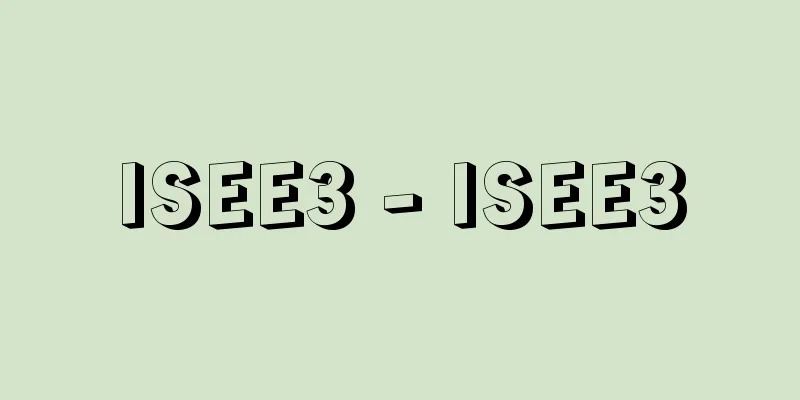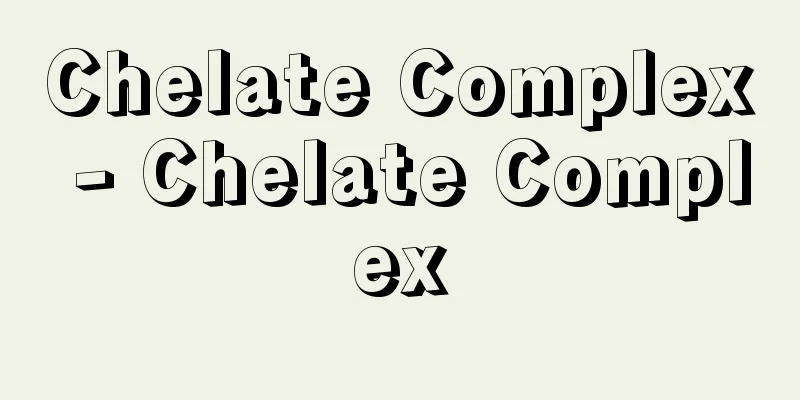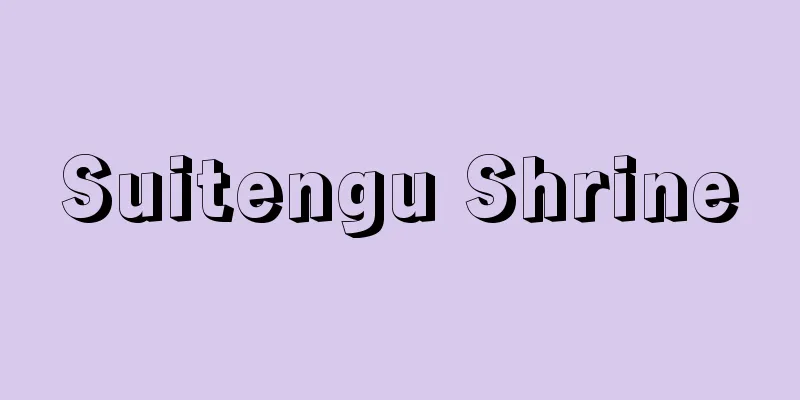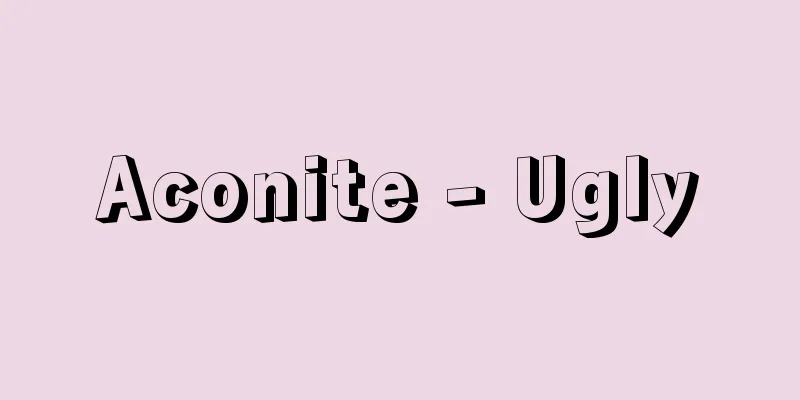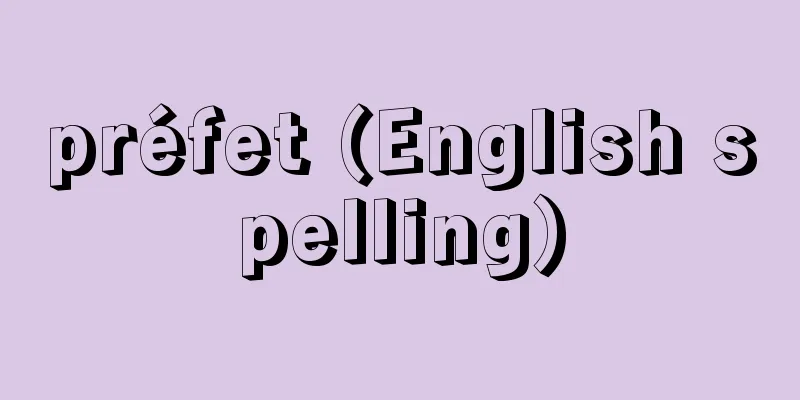Rubbing - Takuhon

|
This refers to the technique of transferring characters or patterns carved into stone or metal onto paper in their original form, including roof tiles, bricks, ancient monuments, stone tablets, memorials, literary monuments, gravestones, hanging bells, cliff-carved Buddha statues, sword tsuba (guards), sword inscriptions, inkstones, and coins. Type, seals, woodblock prints, etc. are made with left-right writing so that when copied, the characters face forward, and in a fish rubbing, ink is applied directly to the fish and pressed against the paper, resulting in the reversed left-right, but in a rubbing, paper is placed over the original and ink is applied over it to create a relief pattern, so the characters are copied full-size on the front, with the engraved parts appearing white and the uncarved parts appearing black. Because even the subtleties of the dots and lines of the characters can be seen full-size, rubbings are an indispensable resource and method in the fields of archaeology and epigraphy, which studies written texts such as inscriptions and bell inscriptions. Furthermore, the simple beauty expressed in the black and white monochrome differs for each rubbing depending on the rubbing artist, the shade of ink, the weather, and other conditions, and since there are only a limited number of them, their primitiveness makes them an object of appreciation as works of art. Another type of rubbing is leaf rubbing, which involves making rubbings of plant leaves, wood grain, or tree bark to allow one to appreciate the beauty of natural shapes. [Noriko Oyama] History of rubbingsIn China, when copying originals in ink on paper, the early practice was to use a double-hooked ink technique in which caged characters are used and the outlines are filled in with ink, and at the same time, the reproduction of replicas of monuments was also actively carried out. A rubbing of the "Hot Spring Inscription" by Emperor Taizong of the Tang Dynasty, discovered in the Dunhuang Grottoes, contains an ink inscription dated 653, the 4th year of the Yonghui era, proving that the technique of rubbing was already in existence at that time. In the past, they were called uchihon or tohon, and there were rubbings made directly from monuments, and those that were then carved again into stone or woodblocks before being made into rubbings; the former were called original rubbings and the latter were called model rubbings or mock rubbings. These rubbings made into folded copies were called hojo, and were appreciated as masterpieces of calligraphy and used as models for learning. In Japan, this technique was originally called ishizuri (stone rubbing), and is thought to have been introduced from China. In the Nara period, rubbings of stone monuments were imported, and in the Kamakura period, rubbings of images of Bodhidharma and other Zen monks were brought over by Butsujo Zen master. One record of rubbings in Japan is the Genko Shakusho by Kokan Shiren, which records that Giku made a copy of a broken stone monument at Toji Temple. This is the first example in Japan of rubbings being used in epigraphy research. As the arts and sciences flourished in the Edo period, rubbings of old roofing tiles, ancient monuments, and gravestones came to be made in large numbers and highly valued. The calligrapher Hosoi Koutaku attracted attention for his research into rubbings. Even today, when photography has advanced, rubbings remain important in archaeological and art history research. [Noriko Oyama] How to make a rubbingThere are two methods of rubbing: dry rubbing and wet rubbing. Dry rubbing is the same as the game of placing paper on a coin or medal and rubbing it at an angle with the lead of a pencil. When paper is placed on the original, held firmly so that it does not move, and rubbed evenly with solid ink, the high points are dark and the low points are light. This dry rubbing method is used for small pieces or pieces with delicate patterns, and wood carvings that cannot be wet. [Noriko Oyama] Wet reclamation methodA method in which a piece of paper is placed over the surface of the original, soaked with water, and then tapped with a pad of ink to copy the image. This wet rubbing method is used in most cases for rubbings of monuments and other structures. (1) Measure the dimensions of the original and wipe off any dirt or dust. However, moss and other growths should be left as is as much as possible, and the original state should not be damaged. (2) Cut the paper to an appropriate size, place it on the monument surface, and either paint it with water using a brush or spray it evenly with a spray bottle. It is easier to do this if you lightly secure the four corners with cellophane tape. However, be aware that the use of adhesives such as tape may be prohibited in some cases. (3) The air bubbles between the stone and the paper are pushed out into the characters and out of the stone, and the paper is made to adhere to the stone. To do this, a cloth or a wet towel tightly rolled up is used. (4) Then, using a short-bristled brush or a rod made of absorbent cotton wrapped in felt, tap quickly but thoroughly in a hammering motion until the lines of the letters stand out clearly. (5) While the paper is still slightly damp, make a stamp using a muneco. Using two munecos, dip one muneco in ink and rub it against the other muneco to even out the ink density. Check the darkness with a piece of extra paper, then quickly tap the entire surface of the paper. Start with a light stroke, then tap repeatedly to make the ink density uniform. Tap the muneco at right angles to the paper, lightly as if bouncing a ball (never hit too hard). Once the ink is evenly applied over the entire surface, use another small muneco to tap in the fine details to complete the work. (6) Carefully peel off the paper before it dries completely and place it on a spread newspaper to dry. Once dry, roll it up into a cylinder and store it. The rubbings with backing can be framed or made into scrolls for viewing. [Noriko Oyama] Tools for rubbing
(2) Ink For dry rubbing, rub with rubbing ink (pebbles ink). For wet rubbing, use oil ink. If you are only going to make one or two sheets, you can use a good quality ink that has been rubbed thickly. Experts use ink made by boiling down vegetable oil and soot powder, mixing it with finely chopped old cotton, and kneading it. Ink creates unevenness and bleeds when wet, so it is not suitable for rubbing. (3) Tampo: Cotton wrapped in cloth, used to tap paper with ink. The best cloth to wrap it in is starch-free habutae or momi, but fine-grained synthetic fibers are also acceptable. Coarse cloth such as linen may also be used to create special effects. Cotton is best used for the filling, absorbent cotton is not suitable. Roll the cotton into a ball, cover it with a sponge about 4-5 cm thick cut into a circle larger than the cotton ball, and then wrap it in cloth. Place a piece of cardboard cut into a circle at the base, squeeze the cloth so that it does not wrinkle, and tie the base with string. A separate rod of cotton or cloth is attached to the center of the squeezed part as a handle. The handle should be of a suitable length to hold. It is recommended to have two large mumpos (7-8 cm in diameter), one medium-sized one (about 5 cm), and one small one (about 2 cm). For larger surfaces, use a larger muneca to create a broad feel, and for finer contours, use a smaller muneca. (4) Others: The water brush can be a paste brush used for paper screens, etc., and should be long and soft. The tataki brush has short bristles, and an old clothes brush can be used instead. Water is essential for wet land reclamation, so be sure to have a water bottle ready. [Noriko Oyama] Tips for reclamationPermission must always be obtained from the owner or manager of the monument before making a rubbing. In the case of important cultural properties, as a general rule, permission will not be granted even if you request it. You must never paint ink directly onto the surface of the monument. Not only will this soil the monument, but it will also reflect negatively and defeat the purpose of the rubbing. Of course, care must be taken not to damage or soil the monument, but it is also important not to step on the vegetation surrounding the monument or ruin the scenery. Windy or rainy days are not suitable for making rubbings, and hot, fine weather can be too dry and difficult to work on. Cloudy days are the best weather. [Noriko Oyama] "Illustrated Encyclopedia of Rubbing Techniques" by Uchida Koji (1989, Sogensha)" ▽ "Illustrated Encyclopedia of Rubbings for Beginners" by Shinozaki Shiro (1991, Kashiwa Shobo)" ▽ "The History of Chinese Calligraphy as Seen through Rubbings: Yin to Tang" edited by Hidai Nankoku and Tsutsui Shigenori (1997, Tenrai Shoin)" ▽ "Introduction to Rubbings" by Motoyama Chie (Hoikusha, Color Books) [Reference items] | | | | | | | | |Source: Shogakukan Encyclopedia Nipponica About Encyclopedia Nipponica Information | Legend |
|
石や金属に彫られた文字や模様を、原形のまま紙に写し取ったもの、およびその技法。瓦(かわら)、磚(せん)(塼)、古碑、板碑、記念碑、文学碑、墓碑、釣鐘、磨崖仏(まがいぶつ)、鐔(つば)、刀銘、硯(すずり)、コインなどがその対象となる。 活字、印章、版画などは、写し取ったとき、文字を正面向きとするために左文字につくられており、魚拓では魚に直接墨汁を塗って紙に押し当てるため左右反対になるが、拓本は原物に紙を当て、その上から墨を打って凹凸の文様を写し出すので、文字はそのまま正面に原寸大で写し出され、刻み込んだ部分は白く、彫り残した部分は黒くなる。文字の点画や線の微妙な部分まで原寸大で見ることができるため、考古学や、碑文・鐘銘などの文字文章を研究する金石学の分野では、拓本は不可欠の重要な資料であり方法といえる。また、白と黒のモノクロームで表現される簡素な美は、採拓者、墨の濃淡、天候その他の条件によって一枚一枚できあがりが異なり、数にも限りがあるので、その原始性が芸術作品として鑑賞の対象となっている。また、植物の葉や木目(もくめ)、木はだを拓本にとって、自然の造型美を味わう葉拓(ようたく)も拓本の一種である。 [大山倫子] 拓本の歴史中国では真跡を紙本墨書で複製する場合、籠字(かごじ)にとり輪郭の中を墨で塗りつぶす双鉤填墨(そうこうてんぼく)が早く行われていたが、これと並んで碑の模本復刻も盛んに行われた。敦煌石窟(とんこうせっくつ)で発見された唐の太宗の『温泉銘』の拓本に、永徽(えいき)4年(653)の墨書があり、すでにこのころ拓本技術があったことがわかる。古くは打本(うちほん)あるいは搨本(とうほん)といい、碑から直接に写した拓本と、それをさらにもう一度石や木版に彫ってから拓本にしたものがあり、前者を原拓、後者を模本とか模拓という。これらの拓本を折本に仕立てたものを法帖(ほうじょう)といい、書道の名品として鑑賞され、学習の手本とされた。 日本では古くは石摺(いしずり)といい、技法は中国から伝来したと思われる。奈良時代には碑本が舶載され、鎌倉時代には仏照禅師によって達磨(だるま)以下禅僧の画像拓本がもたらされている。日本での採拓記録として、虎関師錬(こかんしれん)の『元亨釈書(げんこうしゃくしょ)』に、義空が東寺の断碑を模印したことが記されている。これは拓本が金石文研究に使われたわが国最初の例といえよう。江戸時代に学芸が盛んになるのに伴い、古瓦(こがわら)・古碑・墓碑などの拓本が多くとられて珍重されるようになる。書家細井広沢(こうたく)は、模拓についての研究を行い注目された。写真技術の発達した現代でも、拓本は考古学や美術史研究のうえで重要である。 [大山倫子] 拓本のとり方乾拓と湿拓の二つの方法がある。乾拓はコインやメダルの上に紙を当てて鉛筆の芯(しん)を斜めにしてこする遊びと同じ方法で、原物の上に紙を当て、動かないようにしっかりと押さえ、固形の拓本墨でまんべんなくこすりつけると、高いところは濃く、低いところは薄く写る。小品や繊細な文様のあるものや、ぬらすことのできない木彫りの作品などでは、この乾拓法を用いる。 [大山倫子] 湿拓法原物の表面に当てた紙を、上から水でぬらして張り付け、墨のついたタンポでたたいて写し取る方法。碑などの採拓にはほとんどこの湿拓法が用いられる。(1)原物の寸法を測り、泥やほこりを払う。ただし、苔(こけ)などはなるべくそのままにし、現状を損じてはならない。 (2)紙を適当な大きさに切り、碑面に当てて刷毛(はけ)で水を塗るか、霧吹きでまんべんなく湿らせる。四隅をセロファンテープで軽く留めるとやりやすい。ただ、テープなど粘着剤使用を禁じられている場合もあるので注意すること。 (3)碑面と紙の間にできた気泡を、文字の中や碑面の外へ押し出し、紙を碑面に密着させる。これには、羅紗(らしゃ)布や、ぬらしたタオルを固く巻いたものを用いる。 (4)さらに、毛の短いブラシか、脱脂綿をフェルトに包んで棒状にしたもので、打ち込むように手早く、かつ念入りにたたき、文字の線がはっきり出るようにする。 (5)紙がいくぶん湿り気を残しているうちに、タンポで採拓する。タンポは二つ持ち、一方のタンポに墨をつけ、もう一つのタンポとこすり合わせて墨加減をならし、余分の紙で濃さを確かめたら、手早く紙面全体をたたいてゆく。初めは薄くし、何度も重ねてたたいて墨の濃さを一様にする。タンポは紙面に対して直角に、ボールが弾むように軽く打つ(けっして強くたたいてはならない)。全体にむらなく打てたら、別の小さいタンポで細部を打って完成させる。 (6)紙が完全に乾ききらないうちに注意しながらはがし、広げておいた新聞紙の上に置いて乾かす。乾いたら筒状に巻いて保存する。拓本を裏打ちしたものは、額装や軸に仕立てて鑑賞することができる。 [大山倫子] 拓本の用具
(2)墨 乾拓の場合は拓本墨(石花墨)でこする。湿拓には油墨を用いる。1、2枚とる程度なら、品質のよい墨を濃く摺りためて用いればよい。専門家は、植物性油と煤(すす)の粉を煮つめ、これに細かく切った古綿をかき混ぜて練った墨肉を用いる。墨汁はむらをつくり、水がかかるとにじむので、拓本には不適当である。 (3)タンポ 綿(わた)を布で包んだもので、墨をつけて紙面をたたくのに用いる。包む布は糊(のり)気のない羽二重(はぶたえ)か紅絹(もみ)を最上とするが、細かい目の化学繊維でもよい。また、麻布のような粗い布目を用いて、特殊な効果を出す場合もある。中に入れる綿はもめん綿がよく、脱脂綿は適さない。綿を丸め、厚さ4、5センチメートルくらいのスポンジを綿の球より大きめに丸く切ったものをかぶせ、その上から布で包む。根元のほうに丸く切った厚紙をのせ、布にしわが出ないように絞り込み、紐(ひも)で根元をくくる。別に綿か布を棒状にしたものを把手(とって)として、絞り込んだ中央につける。把手は握るのに適当な長さとする。タンポは大(直径7、8センチメートル)2個、中(同約5センチメートル)1個、小(同約2センチメートル)1個は用意したい。大きい面は大きいタンポでおおらかな味を出し、細かい輪郭は小さいタンポを用いてたたくとよい。 (4)その他 水刷毛は障子張りなどに使う糊刷毛でよく、毛足の長めで軟らかいものを選ぶ。たたき刷毛は毛足の短いもので、古い洋服ブラシなどで代用できる。また、湿拓には水が欠かせないので、水筒はかならず用意する。 [大山倫子] 採拓の心得かならず碑の所有者、管理者などの許可を受けてから採拓する。重要文化財などは、原則として、願い出ても許可されないと考えてよい。絶対に直接碑面に墨を塗ってはならない。碑を汚すばかりでなく、反対に写って拓本の意味をなさない。碑を損傷したり、汚れたりしないように注意するのはもちろんだが、碑の周囲の草木を踏んだり、景観を損じないようにすることもたいせつである。採拓には、風のあるとき、雨天は不適当であり、炎暑の好天も乾きすぎてやりにくい。天候としては曇天がもっとも適している。 [大山倫子] 『内田弘慈著『拓本技法図典』(1989・創元社)』▽『篠崎四郎著『図録 拓本入門事典』(1991・柏書房)』▽『比田井南谷・筒井茂徳編『拓本で見る中国書道史 殷~唐』(1997・天来書院)』▽『本山ちえ著『拓本入門』(保育社・カラーブックス)』 [参照項目] | | | | | | | | |出典 小学館 日本大百科全書(ニッポニカ)日本大百科全書(ニッポニカ)について 情報 | 凡例 |
>>: Zhuo Wen-jun (English name)
Recommend
Kiss of Fire
…There is no doubt that this was the first tango ...
Solāpur (English spelling)
...Industrial city in the southern tip of Maharas...
Okoshigome - Okoshigome
…A confectionery made by mixing sugar, starch syr...
Rana ornativentris (English spelling)
…Red frog [Takahiro Matsui]. . . *Some of the ter...
alkylurea
...A general term for compounds in which the hydr...
kikimora
…Just as in the house, there were place spirits: ...
Johnny Lee Bench
He is an American professional baseball player (r...
Seiichi Takimoto
Year of death: August 20, 1932 Year of birth: Sept...
Onigana - Onigana
...There are two theories about the Japanese name...
Dyeing - Somemono
Textiles dyed with dyes. They are broadly divided ...
government issue
...A word derived from government issue. It was w...
Sodium Bromide - Sodium Chloride
NaBr (102.89). It is obtained by reacting an aque...
Single sideband modulation
Also called SSB. An amplitude modulated signal has...
Portugal - Portuguese Republic (English spelling)
A republic located in the southwest of continenta...
Arlon
It is the capital of the province of Luxembourg in...
